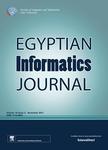版权所有:内蒙古大学图书馆 技术提供:维普资讯• 智图
内蒙古自治区呼和浩特市赛罕区大学西街235号 邮编: 010021

作者机构:Southeast Univ Sch Mech Engn Nanjing 211189 Jiangsu Peoples R China Changchun Humanities & Sci Coll Changchun 130117 Jilin Peoples R China
出 版 物:《EGYPTIAN INFORMATICS JOURNAL》 (Egypt. Informatics J.)
年 卷 期:2025年第29卷
核心收录:
基 金:Not applicable
主 题:Consumption Management Utilization Priority Improved Particle Swarm Optimization Algorithm Smart Building
摘 要:This study presents an innovative approach to optimize energy management in residential microgrids, in light of the rising demand for energy and mounting environmental concerns. The research underscores the vital role of efficient energy management and responsive load control to improve energy efficiency and reduce consumer costs. To this end, a framework is proposed in which a power aggregator operates within a microgrid to manage residential electricity consumption. The primary goal of this framework is to minimize energy costs while considering subscriber preferences and the capacity limitations of the distribution network. The improved particle swarm optimization (IPSO) algorithm is employed to optimize energy management, resolve convergence challenges, and ensure user requirements are effectively prioritized. Integrating emergency, economic, and planned strategies provides cost savings, ensures grid stability, and enhances user satisfaction. The incorporation of Internet of Things (IoT) technology enables seamless communication, precise device control, and data-driven decision-making, empowering households to manage their energy loads more effectively and contribute to grid efficiency. Through scenario analysis, this research demonstrates the IPSO algorithm s potential for significant cost reductions and improved grid stability. In Scenario 1, focused exclusively on affordability, numerical analyses present the total cost of electricity under different load conditions over three months. Scenario 2, also prioritizing affordability, highlights the impact of economic considerations on electricity expenses. Furthermore, Scenario 3 (80 % emergency + 20 % affordable) and Scenario 4 (50 % emergency + 20 % affordable + 30 % planned) showcase the potential for cost reduction through various priority combinations. These insights reflect the effectiveness of load management strategies facilitated by IoT technology. This comprehensive energy management approach lays a stro